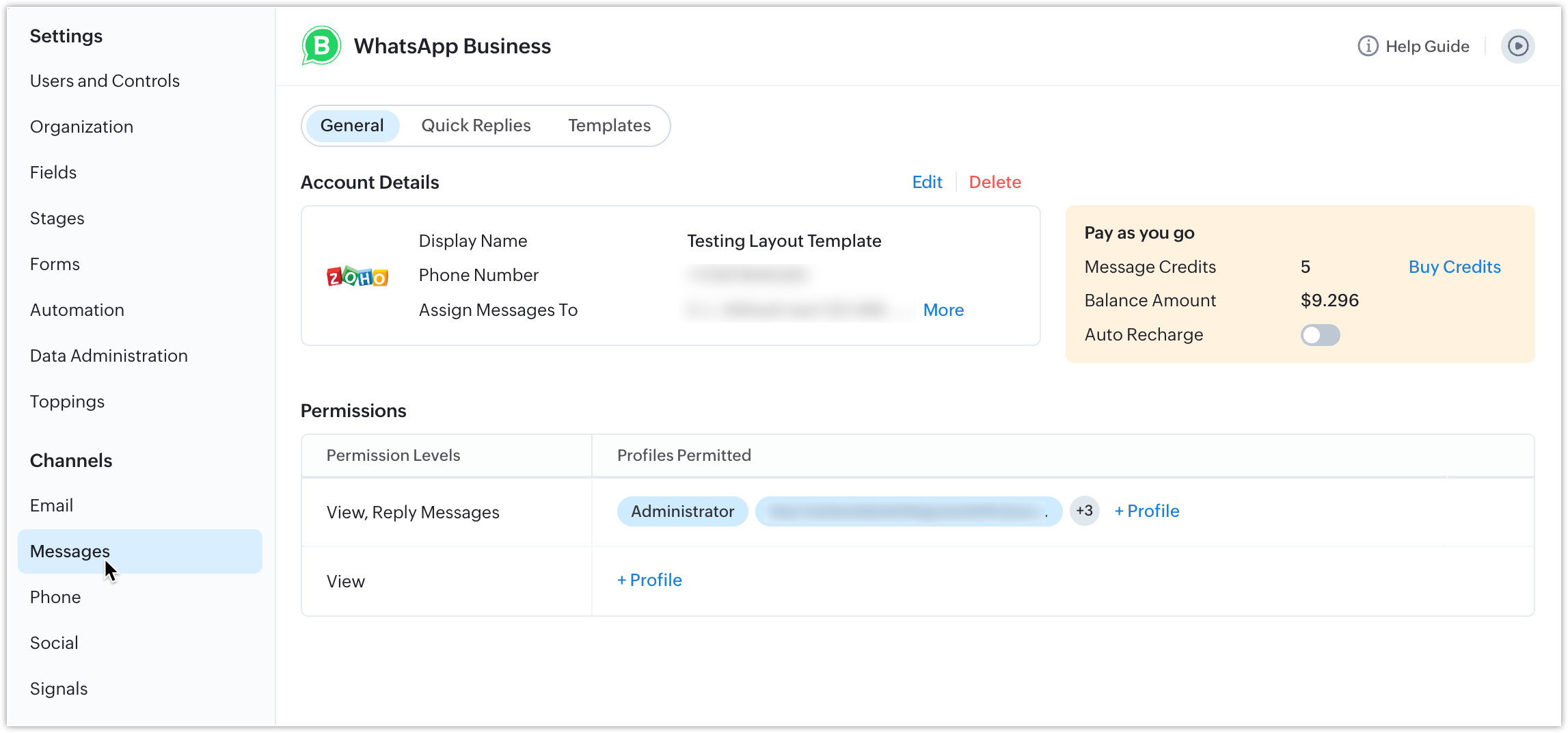Explore Settings
Bigin has various functions which can be configured by administrators from the Settings menu.
Access the Settings menu
The Settings menu can be accessed by clicking the gear icon  in the top right of your window. All the features and Configurations in Bigin are listed on the left and you can select and customize them according to your business needs. The menu contains:
in the top right of your window. All the features and Configurations in Bigin are listed on the left and you can select and customize them according to your business needs. The menu contains:
Users and control: Allows you to add users, create roles, and profiles and manage compliance settings.
Organization: Here details about your organization can be specified. Information such as phone, fax, address, and locale information can be added.
Fields: A list of default and custom fields available in a module will be displayed. You can further add custom fields, mark a field as mandatory and unique to prevent duplicate record entries.
Forms: Design forms that can be shared as links, QR codes, or even as website embed codes. This allows you to capture prospects as Contacts in your Bigin account upon submission.
Workflows: Automate the actions when records meet the criteria that you have specified. For example, when a new contact is added, an email notification can be sent to the record owner and a task to follow up with the contact can be assigned to take place automatically.
Data Administration: Manage the data present in your Bigin account. You can view the history of records imported into your account, export records, schedule/download a backup of your data, view all the actions carried out from audit logs, manage your recycle bin, and monitor the storage utilized.
Toppings : Integrate third-party applications with your Bigin account.

Channels
Set up communication channels for staying in touch with your customer.
Email: Integrate your email to send, receive, and stay on top emails with your customers. You can integrate with your Zoho Mail, Gmail, Office 365, or other mail account that you have. You can also create email templates and send it to a bunch of your customers.
Social: Add your twitter account and be informed whenever your customers are tweeting about your organization.
Phone: Set up your phone and make calls to your customers with a single click. Purchase a number and say goodbye to the hardware phone that you had been used for so long.
Messages: Connect with your customers more seamlessly by integrating WhatsApp with Bigin. To learn how to integrate Bigin with WhatsApp, please refer to this help document.

Zoho CRM Training Programs
Learn how to use the best tools for sales force automation and better customer engagement from Zoho's implementation specialists.
Zoho DataPrep Personalized Demo
If you'd like a personalized walk-through of our data preparation tool, please request a demo and we'll be happy to show you how to get the best out of Zoho DataPrep.
New to Zoho Writer?
You are currently viewing the help pages of Qntrl’s earlier version. Click here to view our latest version—Qntrl 3.0's help articles.
Zoho Sheet Resources
Zoho Forms Resources
New to Zoho Sign?
Zoho Sign Resources
New to Zoho TeamInbox?
Zoho TeamInbox Resources
New to Zoho ZeptoMail?
New to Zoho Workerly?
New to Zoho Recruit?
New to Zoho CRM?
New to Zoho Projects?
New to Zoho Sprints?
New to Zoho Assist?
New to Bigin?
Related Articles
Create email templates
Email templates in Bigin can help you save time and maintain consistency in communication. With a standard format in place, you can use the email templates repeatedly for various situations or campaigns. This can be helpful for a real estate agency ...Email-in Topping
Email is the most popular choice of communication used by customers to send in their sales and support enquiries. Customer facing teams gather details from these emails and manually create a record in their Bigin account to follow up with their ...Email
Email Configuration Why should I configure my email account in Bigin? Configuring your email in Bigin allows you to send, receive, and respond to emails directly within the app. This eliminates the need to switch between your email client and Bigin ...How to add signature to an email template?
You will need to create a custom email signature before you can use it in email templates. To create your email signature Go to Settings > Users and Controls (Admin)/User details (other profiles). Go to the user's details page. Click Add Signature in ...iPad - Configure options under settings
Privacy & Security Go to Settings on your Bigin app to configure the following set of options. Passcode Lock Access to Zoho CRM application can be prevented by enabling the Passcode lock. The user will be prompted to enter a four digit pass code to ...
New to Zoho LandingPage?
Zoho LandingPage Resources















